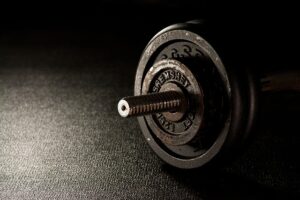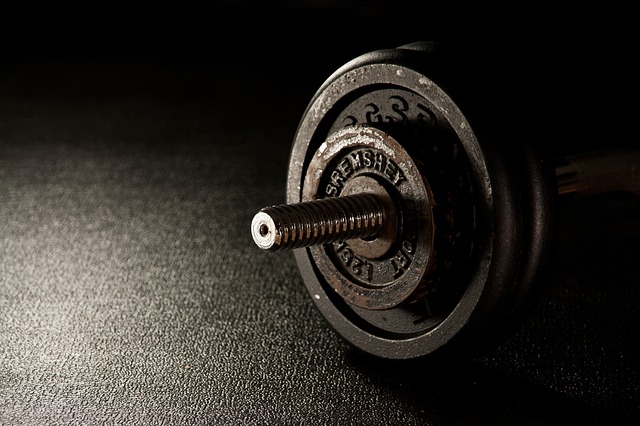How to start weightlifting
 How do you start a strength program with weightlifting?
How do you start a strength program with weightlifting?
I have been getting in a good weights workout at the gym about twice a week for a couple months now. It has been quite enjoyable and had a great impact on not only my strength but on helping me through this injury patch.
I wanted to share this with you to consider. Because I think many people are afraid of weights. Weightlifting has gotten some bad press. Maybe when you think of weightlifting you think of giant muscle meat heads pounding protein drinks and posing greased up in the mirror.
You can go down the body building path. There’s nothing wrong with that. Like any other sport it starts to get unhealthy when taken to extremes.
But, it doesn’t have to be like that for you. It’s actually quite accessible and doesn’t’ require a bunch of equipment and not scary at all if you approach it the right way.
Why? Why would you want to start lifting weights?
Because it makes you stronger. Weightlifting is a form of resistance training. Just like any other resistance training it’s about stress and response. You stress your muscles and they respond by getting stronger.
It’s not just stronger muscles, but stronger connective tissue and skeletal. It makes the whole connected system stronger. As a bonus more muscle burns more resting calories.
And, not to be discounted, having a bit of muscle makes you feel good about yourself. You get a nice self-satisfaction when you feel those muscles under your shirt or when you look in the mirror.
When you do return to running or anything other endurance activity this strength will help your performance and prevent injury.
You might think you’re too old, or too weak or too fat or too whatever, but it’s never too late to start. There are no prerequisites.
Like anything else you need to approach it with the right mindset. Approach it as a practice. Do a season of weigh lifting. Do it as a project. Don’t think of it as being hard and painful and work. Think it as an experiment, a chance to learn, a chance to observe and build awareness of a new aspect of this amazing machine you have.
Set your expectations appropriately. Weightlifting will not change your genetics. If you’ve got a weird, goofy body it’s not going to change – but it will get stronger.
Practically, you need to ease into it. Especially in the beginning. Don’t jump right into heavy weight. Don’t worry about how much weight. Start with ¼ of what you think you can lift. For the first week or two focus on the motion, the form and the consistency of the practice.
Allow yourself to win.
If you jump right into heavy lifting without good form, you’ll break yourself.
You may want to get help. Maybe it’s enough to watch a YouTube video. Maybe you can ask a friend or one of the people at the gym. As with every sport, form is important. Maybe more so in weightlifting.
Why? Because bad form will not only not give you the results you want but will quickly give you injuries. Weights are weight bearing activities, and the angles are very important.
What I’m proposing here are free weights. Dumbbells and barbells. Because they are simple and natural. There are many varieties of resistance training and whatever you are comfortable with and, more importantly will stay consistent with, is what you should use.
I’m talking about free weights. Dumbbells and Barbells. Iron.
There is a simple structure to these workouts whereby I can get all of the major muscle groups every week with two workouts in the week that are about 40 minutes long. Yes, you heard me. I can get the strength I’m looking for with an hour and twenty minutes invested per week.
I will tell you how.
First to define some terms.
Workouts consist of reps and sets. For example, I might do 3 sets of 10 reps of barbell bench press. That means I do 10 repetitions of the exercise and I do that 3 times. 10 reps. 3 sets.
I simplify my workouts into muscle groups. There are 5 muscle groups in my taxonomy. Chest, Back, Arms, Shoulders, Core.
Day one workout is Chest, back and Core. That’s three sets of three different chest exercises, three sets of three different back exercises and 3 sets of a core exercise. All of this I can crank out in about 40 minute or less. The total is 9 sets. If I feel like I want to do more I might do 5 sets or 15 total sets.
I’m doing enough weight that I can get between 6-10 reps per exercise.
Day two is Arms and shoulders. Same thing. 3 sets of 3 different bicep, triceps and shoulders exercises.
Less than 40 minutes.
There’s two ways you can do the sets. The first is what I usually do because it is more time efficient. This is rotational. Meaning you rotate between the muscle groups going from one exercise directly into the next.
So in the chest and back workout that would mean set one of chest directly into set one of back directly into set two of chest directly into set two of back until you rotate through the every exercise once. Then you repeat that rotation 3 times. The advantage of this is that you aren’t waiting between exercises.
The second way is the more traditional super set. In this example you stay with one exercise and rest 60 seconds in between. So exercise one set one, rest, exercise one set two, rest, exercise one, set three, next exercise.
The advantage of this is first that it really stresses that specific muscle for a great workout. The second advantage is that if the gym is busy you can monopolize that equipment until you’re done with it.
So that’s it. Weightlifting is really good for strength. You have to ease into it, but once you get into the flow it’s very time efficient.

